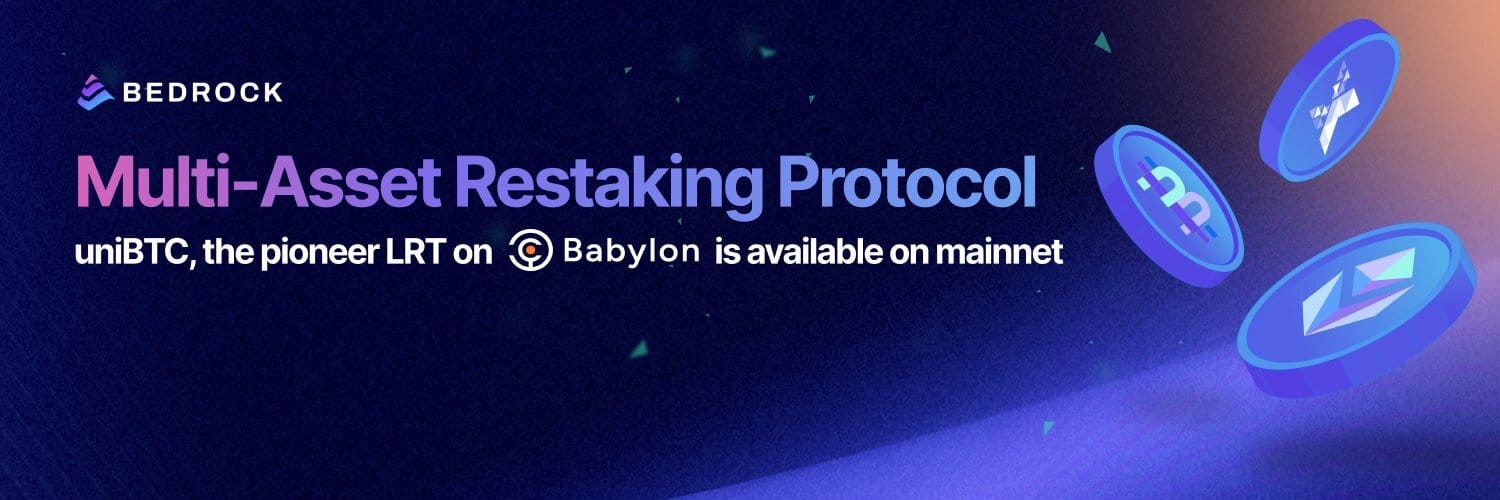- Bitcoin Renaissance
- Posts
- Turning Idle BTC into Productive Capital
Turning Idle BTC into Productive Capital
PLUS: Institutional Bitcoin demand cools as ETF inflows drop, net buying falls below mining supply, BTC stalls near $105K, TeraHash hires ex‐TRON lead for Bitcoin DeFi, and Bedrock expands multi-chain restaking yields.

Happy Friday, Maestros!
Welcome to a new edition of the Bitcoin Renaissance!
This week, Institutional Bitcoin activity shows signs of slowing. Net buying has dropped below daily mining supply, and ETF inflows, including BlackRock’s, have declined. BTC remains capped near $105K amid heavy selling and U.S. tariff uncertainty. TeraHash hires Hunter Rogers, formerly of TRONDAO, to grow Bitcoin DeFi, while Bedrock continues innovating with liquid staking and multi-chain restaking, enabling holders to earn layered yields without losing liquidity.
A new episode of The Bitcoin Economy just dropped. Check it out and subscribe so you don’t miss an episode! We will also be making a BIG announcement next week! Stay tuned.

🚀 Featured Stories
Why did Bitcoin’s largest buyers suddenly stop accumulating? New data shows net institutional buying of Bitcoin has dropped below daily mining supply for the first time in seven months, signaling a shift in demand dynamics.
Institutional Bitcoin demand cools as ETF inflows tumble. New figures show inflows into Bitcoin ETFs (such as by BlackRock) have plunged, raising questions about institutional momentum even as the bull market continues.
Crypto market recap: October 2025 shows Bitcoin break from its typical “Uptober” trend. A detailed recap by BlockchainReporter covers how October ended with Bitcoin down despite prior strength, linking market movements to U.S. government shutdown uncertainty and chain‑level dynamics.
BTC price range stalls amid heavy selling, U.S. tariff ruling in focus. According to a report from Bitget, Bitcoin remains capped below $105,000 due to a cluster of large sell orders and market caution ahead of a U.S. tariff decision—which underscores macro linkages beyond pure crypto.
TeraHash adds ex‑TRON lead Hunter Rogers to drive Bitcoin DeFi growth. TeraHash announced that Hunter Rogers (formerly of TRONDAO) has joined as co‑founder to lead institutional partnerships and ecosystem outreach for Bitcoin‑native yield infrastructure.

💡Spotlight: Bedrock
is building liquid staking and restaking infrastructure that turns Bitcoin into productive capital for on-chain finance. The protocol gives BTC holders a way to earn native yield while keeping their Bitcoin liquid and usable across DeFi. Bedrock’s focus is on extending Bitcoin’s economic security into the broader crypto ecosystem and making BTC a core collateral asset across more than 10 blockchain networks.
🛠️ Key Features
uniBTC: Bedrock issues uniBTC, a liquid staking token that represents staked Bitcoin. uniBTC gives holders access to yield while keeping their BTC liquid. Users can deploy uniBTC across supported DeFi ecosystems for lending, liquidity, or additional yield strategies, without locking up their original Bitcoin position.
Bitcoin Restaking: Bedrock enables BTC to secure additional networks and earn incremental rewards through restaking. This approach extends Bitcoin’s economic weight into emerging protocols, creating a path for BTC to take an active role in on-chain security. Restaking allows the same BTC collateral to participate in multiple yield sources.
Multi-Chain Access: The protocol offers multi-chain support so BTC liquidity can move where activity is. uniBTC is designed for use across several major chains, giving holders the ability to shift into different DeFi environments without unstaking. This improves capital efficiency by keeping yield active, even as users move between ecosystems.
Non-Custodial Structure: Bedrock is built with a non-custodial design that keeps user ownership intact. Staking and restaking operations are handled through smart contract infrastructure, with risk management and validator selection frameworks in place to reduce exposure to slashing or operational failures.
Diamonds Program: A points model that rewards early participation. Users earn Diamonds for staking BTC and supporting ecosystem liquidity. Points reflect contribution to Bedrock’s growth and are intended to play a role in future governance and user participation incentives. Worded intentionally without guaranteeing specific conversion.
The Future
Bedrock is working to set Bitcoin as a primary collateral asset for on-chain finance. The roadmap includes additional restaking integrations, deeper liquidity across major DeFi hubs, and more pathways for uniBTC to function as productive collateral. The goal is to make Bitcoin a capital-efficient asset that powers lending, trading, and network security, while still anchored to Bitcoin’s trust and settlement properties. As more DeFi infrastructure becomes Bitcoin-compatible, Bedrock is preparing the foundation for a BTC-driven financial system with restaking at its core.

President Donald Trump used Bitcoin to purchase a burger, creating the first recorded Bitcoin transaction by a U.S. president. This milestone highlights Bitcoin’s growing real-world utility and adoption beyond traditional finance.
Charles Schwab’s CEO revealed that the $11.6 trillion firm plans to offer Bitcoin trading starting in 2026. “We’re having a lot of success in the crypto space,” he said, signaling mainstream financial institutions’ continued embrace of digital assets.
Brian Armstrong highlights that as 2026 approaches, billions of people remain limited by U.S. market hours and closures. He argues that tokenized assets will change this, providing instant settlement and around-the-clock trading, making financial markets more accessible and efficient for everyone.
Strive announces an upsized Perpetual Preferred Stock ($SATA) offering, increasing from 1.25 million to 2 million shares at an $80 IPO price. Investors are watching closely for potential Bitcoin-related allocations as the company expands its financial strategy.
